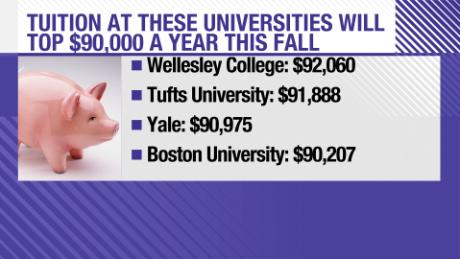New York (CNN Business)Sears, the 133-year-old company that was once the jewel of American retail, continues its slow and precipitous decline. It keeps shuttering Sears and Kmart stores, even after emerging from a bankruptcy designed to salvage the company.
It is closing scores of stores across the United States. Although the privately held company hasn't released an official list, Sears plans to close an additional 100 or more stores in coming months, according to multiple reports, including online message board thelayoff.com.
For now, the majority of these closures are reportedly Kmarts. This latest round comes only weeks after an announcement that 26 Sears and Kmart stores would be shuttered in nearly two dozen states.
So far this year, Kmart has closed, or plans to close, about 60 stores, leaving fewer than 100 open. Sears has closed, or will close, more than 30 stores this year, reducing the number to fewer than 200.
When it emerged from bankruptcy in February, parent company Transform Co. originally said it would close 36 Kmarts and no Sears stores. The escalation signals its turnaround plan isn't succeeding.
Transform Co. declined to comment on the latest round of closures.
"That Sears is closing stores now, before the important holiday trading period, shows that the company's business model still isn't working," Neil Saunders, managing director at GlobalData Retail told CNN Business. "This isn't surprising, as Sears never really had a credible plan for survival: it has always been about making cuts to help the bottom line, rather than being about how to grow the top line."
He added that the company has made few efforts to revitalize the brand or bring in new customers.
"It still comes across as a tired company that has little to offer," Saunders said. "In today's cutthroat retail environment that's not good enough, and it suggests that Sears is still on a journey where the ultimate destination is failure."
Earlier this year, a bankruptcy court approved the sale of most of the retailer's assets to a hedge fund controlled by Eddie Lampert, the company's chairman, for $5.2 billion. His plan was to keep some 400 stores open and secure the jobs of roughly 45,000 employees.
The company's ever-shrinking footprint is a far cry from 2005, when Lampert merged Sears and Kmart in an $11 billion deal. Between the two brands, it then had more than 3,500 US stores and more than 300,000 employees. By last year, that number plummeted to 1,000 stores and 89,000 employees.
Sears is experimenting with new formats as it fights for survival. In April it opened a new store called Sears Home & Life, which sells only home goods like appliances and mattresses and is a fraction the size of a typical Sears. Only three stores have opened.
Sears' decimated dominance
Founded in 1893, Sears grew to become most important retailer and the largest private sector employer in the United States in middle of the 20th century. With its network of stores anchoring malls and its catalog business providing virtually anything a shopper could desire, it was both the Walmart (WMT) and Amazon (AMZN) of its day.
It's been overtaken by larger and more aggressive retail rivals. Big box retailers such as Target (TGT) and Costco (COST) offer lower prices and a wider selections.
Sears has lost in excess of $12 billion since its last profitable year in 2010 through to its 2018 bankruptcy filing.
--CNN Business' Chris Isidore contributed to this report.



















